Planning Ahead, A Guide to Mortgage Documentation
It doesn’t matter if you are looking to purchase your first home, your next home, or your twentieth home; typically the mortgage documentation required to secure financing will be the same. The earlier on in the process you can collect these documents, and provide them to your broker, the better.
So here we go, here is a list of the most common documents that will be required to secure mortgage financing.
Income Verification
Letter of Employment - Written on company letterhead with a current date, your letter of employment should have your name, start date, position, and list whether you are full or part-time. It should also indicate your salary or the minimum guaranteed hours/week & hourly rate. The letter should be signed with the best contact information to allow for a verbal confirmation.
Pay Stub or Direct Deposit Form - This will confirm your income, and should match what is written on the letter of employment.
T4 Slips - Typically your last two years T4s should work.
Notice of Assessments - Your previous two years of NOAs will help to establish your annual income. We will be looking at your line 150.
Financial Statements - If you happen to be self-employed, having three years of financial statements or T1 Generals will be required.
Down Payment Verification
Bank Statements - 90 days of bank statements are required to show that you have had the downpayment in your possession or have accumulated the funds through payroll deposits. You will want to make sure that your name and account number appear on the statements.
Gift Letter - If all or part of the downpayment is coming by way of a gift, you will have to provide a letter signed by you and the person gifting the money. The amount written on the gift letter will have to be deposited to your bank and substantiated on the bank statements.
RRSP Statements - If part of your downpayment is coming by way of RRSP, you will be required to provide a 90-day history from your RRSP account. If you are using the Home Buyers Plan, there will be an additional form to complete.
Agreement of Purchase and Sale - If your downpayment is coming by way of a sale of another property, the contract indicating the sale price, and your current mortgage statement will prove the equity to be used for the downpayment.
Property Details
MLS Listing - If you are purchasing a property through a Realtor, please have a copy of the MLS listing so we can verify the property details.
Purchase and Sales Agreement - If you already have an accepted offer, please provide a copy of the purchase and sales agreement including all amendments and counteroffers.
Survey - If you have one, send it along, if not, no worries.
Property Tax Assessment - If you don’t have a copy of the most recent property tax assessment, one can usually be found on the local municipality/city website. The most recent assessment will be required.
Other Documentation
Solicitor or Notary Information - Please provide the name of your lawyer/notary, the firm, and their contact information.
Mortgage Statement - If you are doing a mortgage refinance, please provide a copy of your current mortgage statement.
VOID Bank Cheque - This is the account that your mortgage payments will be withdrawn from. A pre-authorized debit form works just as well.
As each mortgage is different, the documentation to satisfy each mortgage will vary somewhat. This list is a great place to start, but please know that more documentation may be required depending on your specific financial situation.
If you have any questions, please don’t hesitate to contact me anytime!







